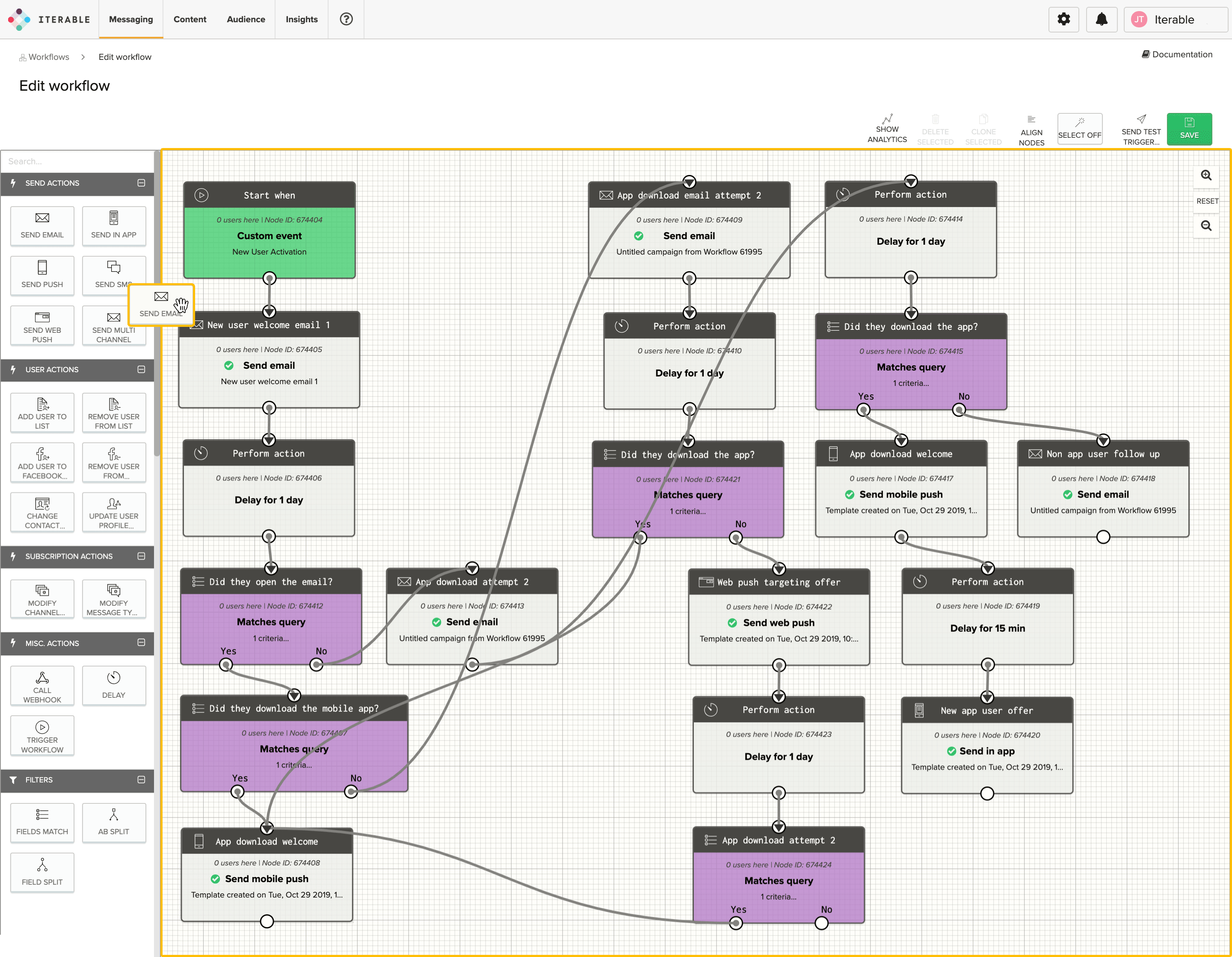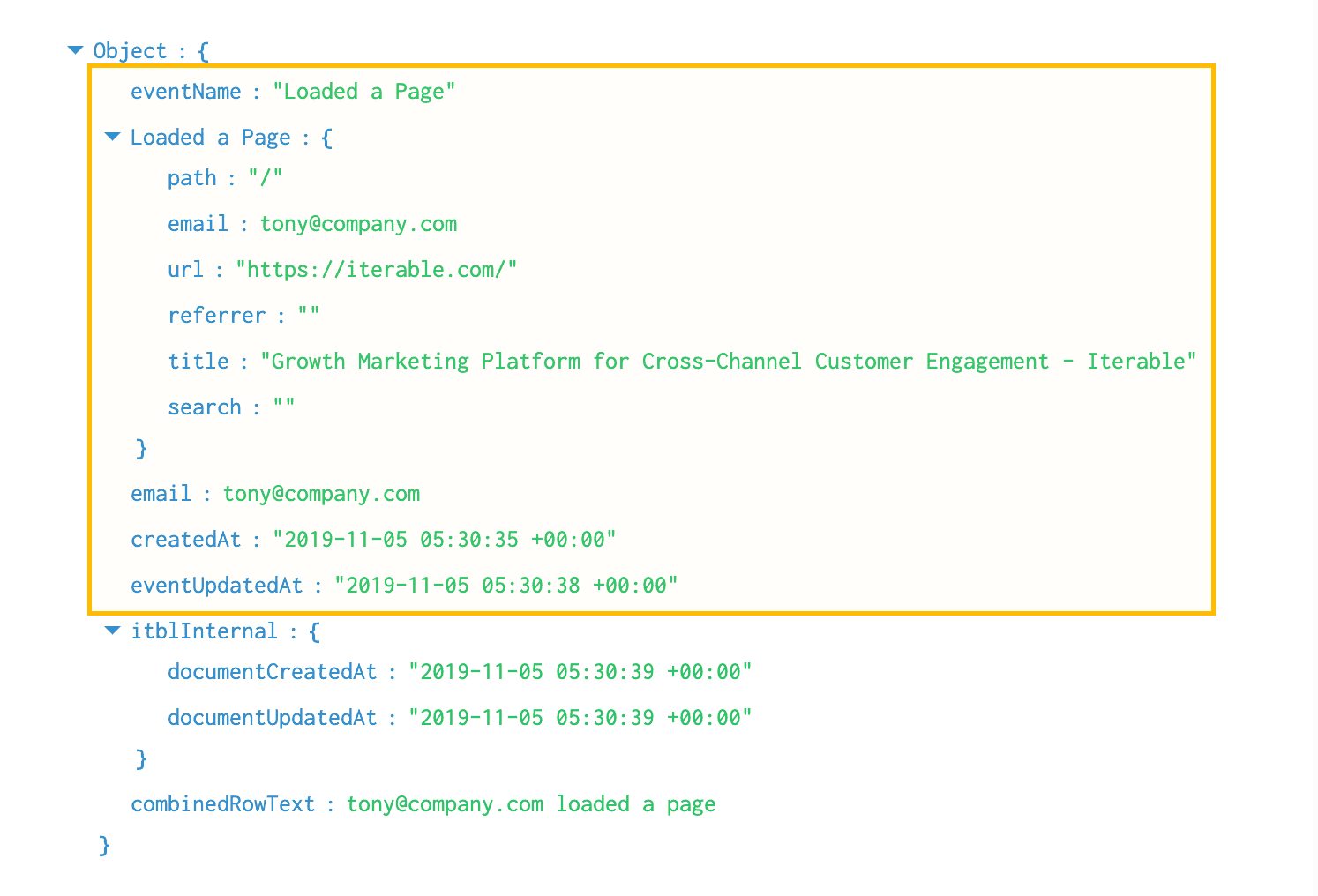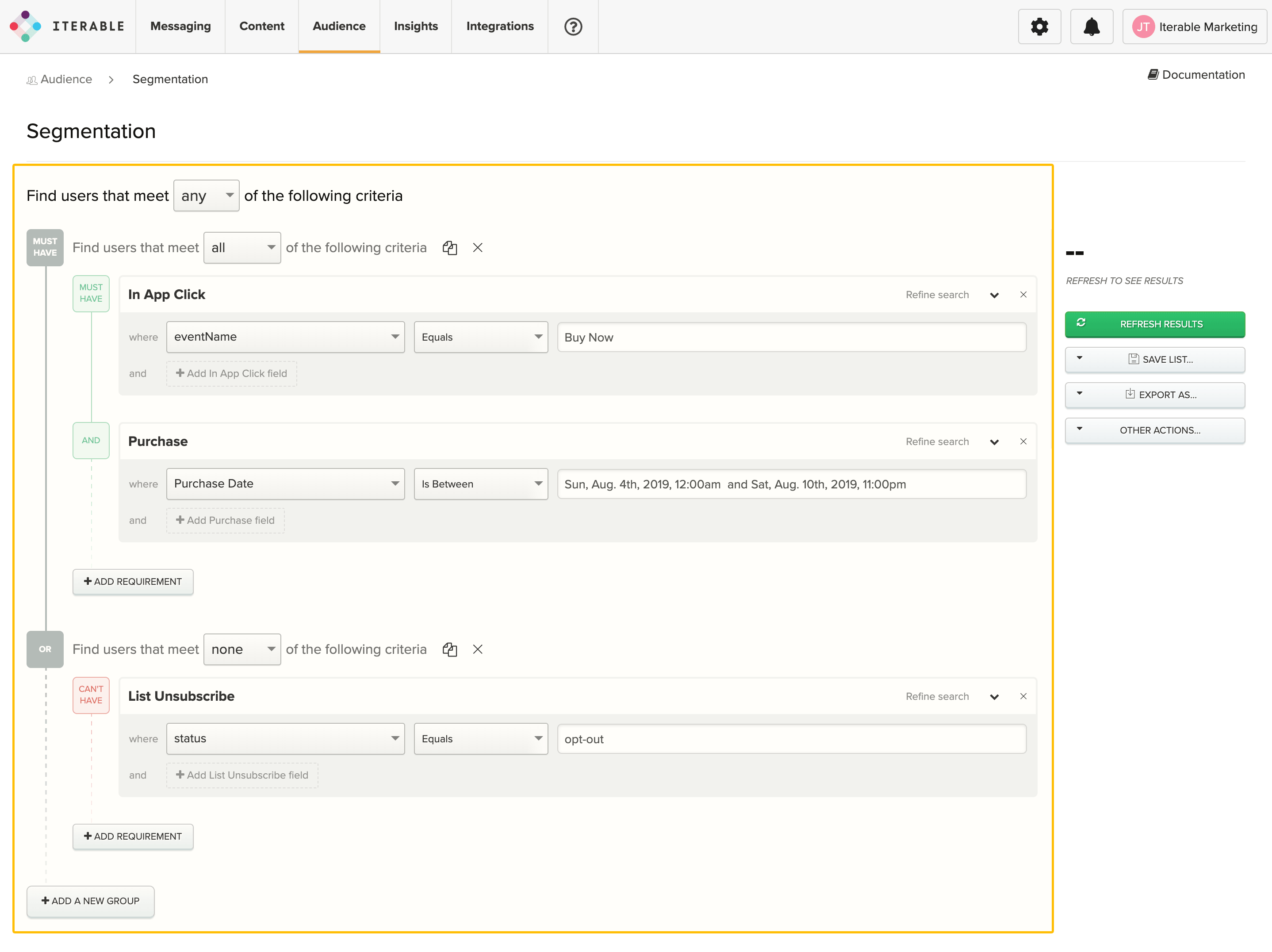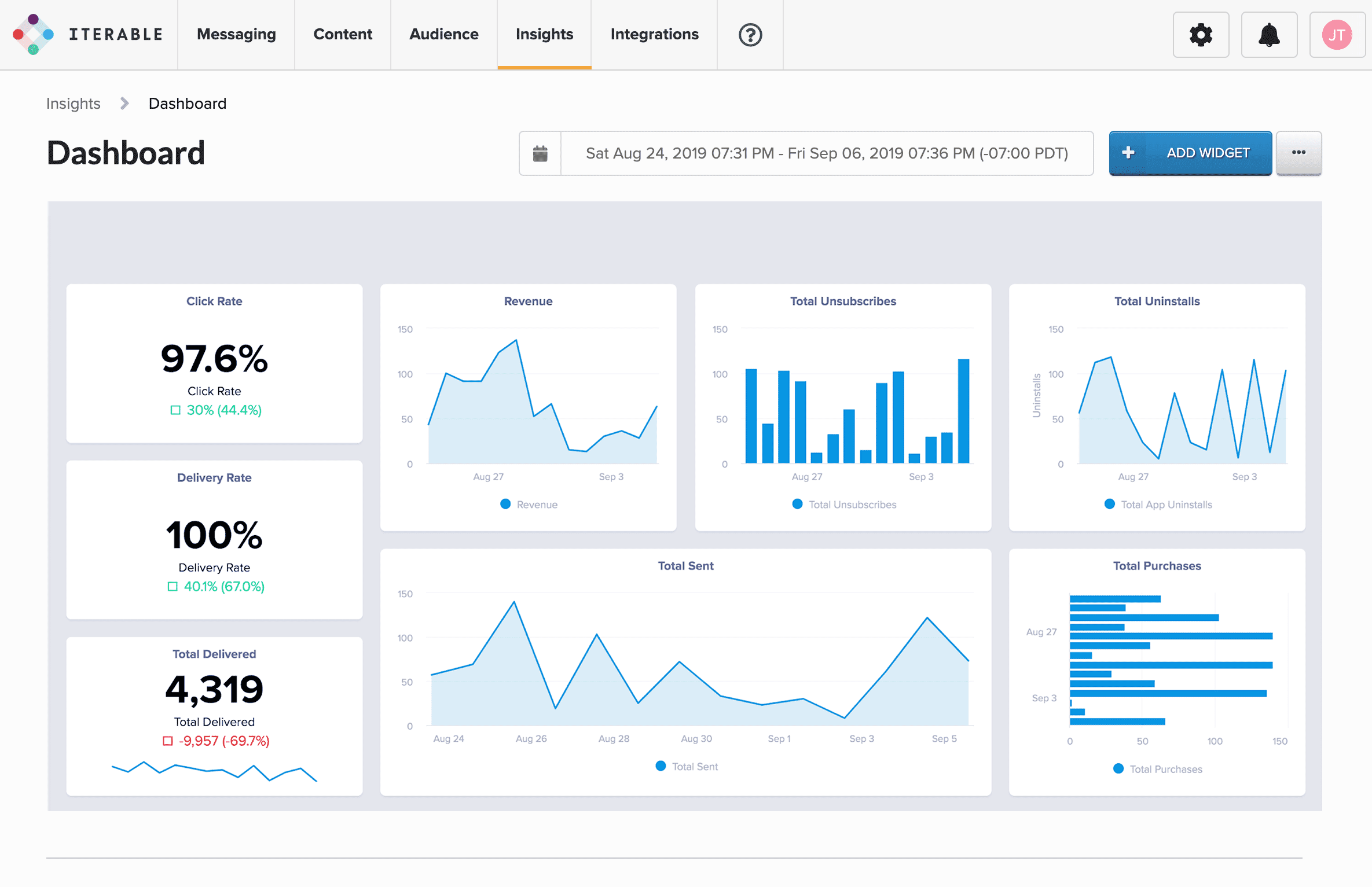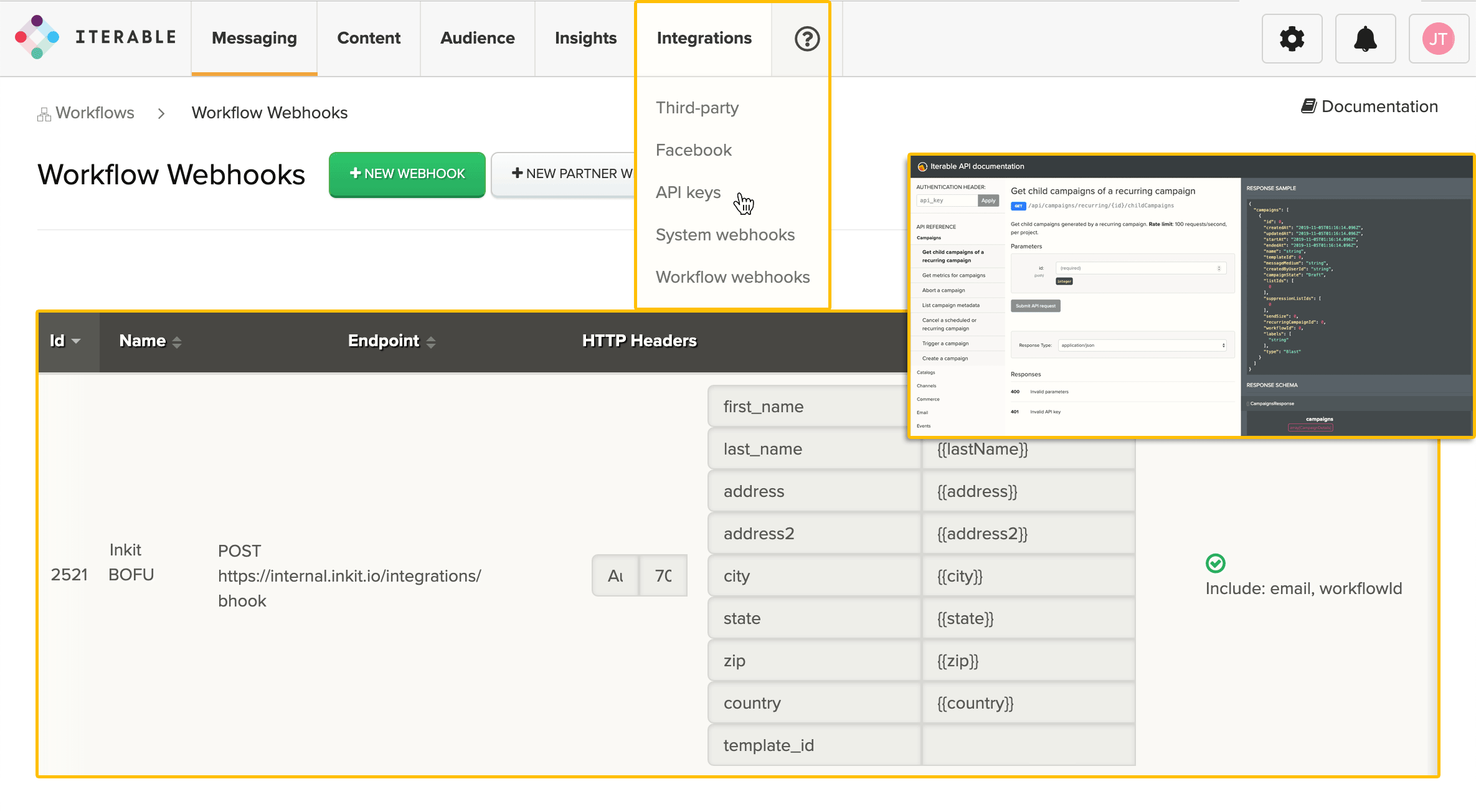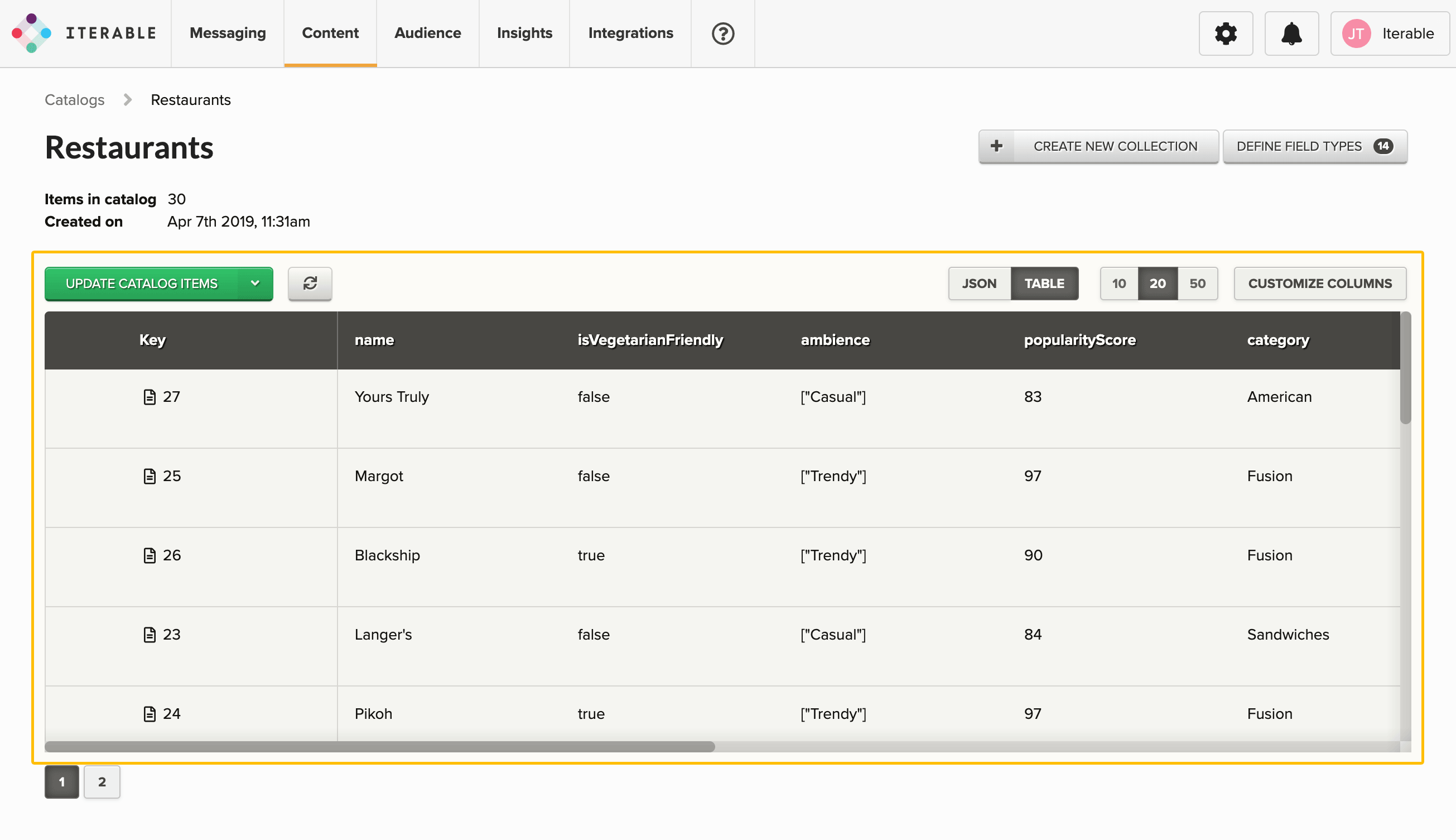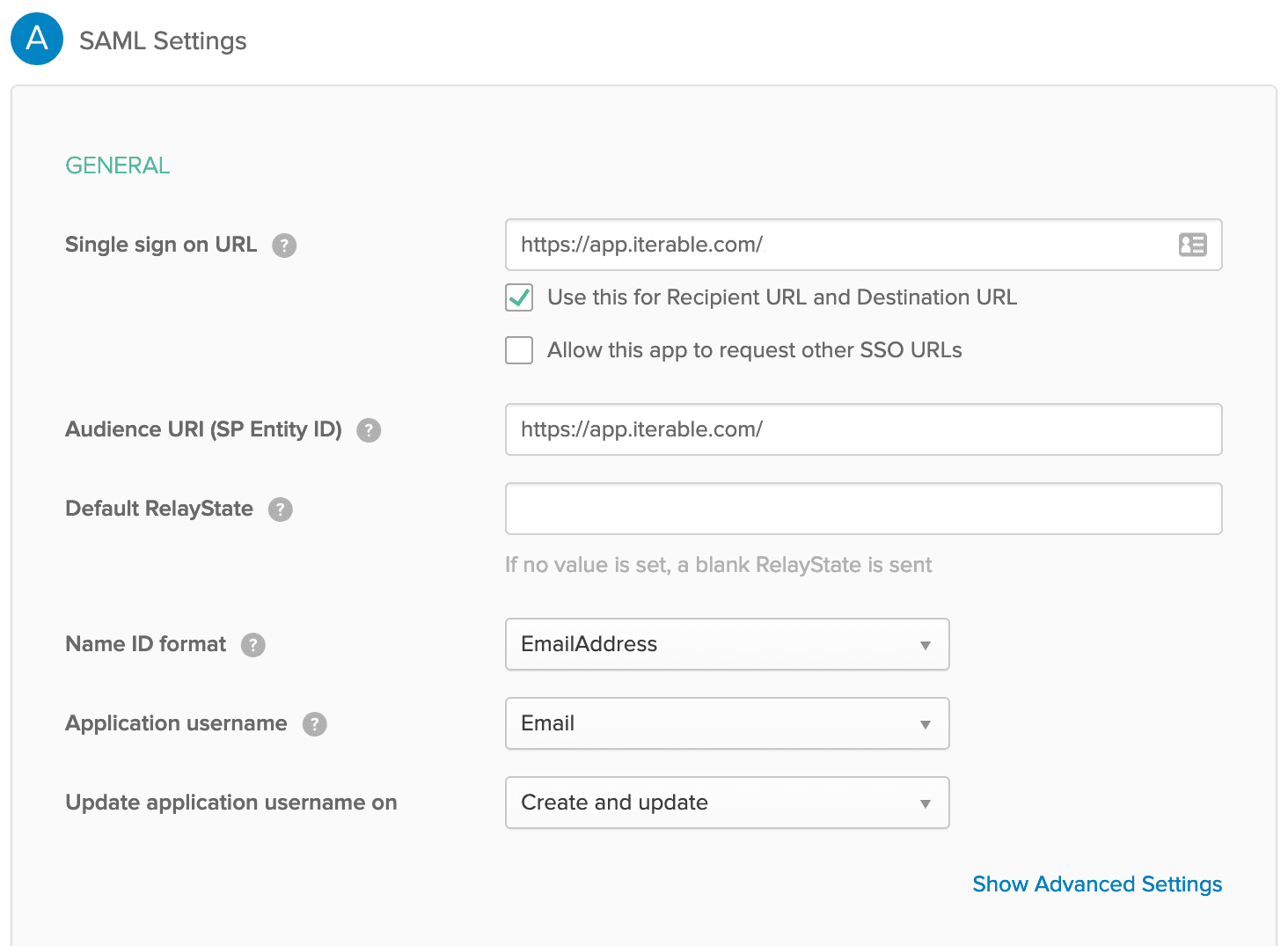Customer engagement is a brand’s direct indicator of the experience they’re providing. Indicative of metrics concerning customer interaction (clicks, opens, conversions, and more), customer engagement describes the ongoing relationships you’ve developed with each customer. Strong customer relationships result in high levels of earned affinity, trust, loyalty and increased customer long-term values. Explore our product details for information on how Iterable’s customer engagement solutions can help you get the most out of your marketing efforts.
Our solution for Customer Engagement
What is customer engagement?
Customer engagement refers to how strong a customer's relationship is with a brand, defined by a series of measurable benchmarks throughout the customer journey.
The customer isn't necessarily someone who's purchased a product from you, but they have actively engaged with your brand in some form. By developing and tracking metrics associated with customer engagement, you'll be able to more accurately predict future buying behavior and gain a strong understanding of which customers are your strongest advocates, as well as which customers are at risk of becoming disengaged.
When you build out your marketing campaigns, you can define a series of touchpoints throughout the customer lifecycle that you can tie to customer engagement. Data from these initial campaigns can be used as benchmarks as you optimize your customer engagement strategy through the entire buying cycle.
Why is it important to have marketing touchpoints throughout the customer journey?
Building a customer engagement strategy requires identifying and understanding how and when customers are likely to engage with your brand. Marketing touchpoints are used to track each time the customer "touches" your brand—and by building a strong cross-channel marketing strategy, your brand will be able to gain an in-depth picture of the entire customer experience from start to finish.
A customer's first interaction with a brand, or "first touch," may be based on word-of-mouth. However, you can use digital marketing tools to track their entire digital footprint from there—including steps, such as visiting a website, signing up for an email list, opening an email, engaging in a live chat, purchasing an e-commerce product, or contacting customer support.
By tracking each customer's touchpoints, you'll be able to segment customers based on their journeys and develop personalized paths for improving the customer experience by leveraging their communication preferences and past interactions with your brand. For instance, a customer who just visited a product page but didn't make a purchase may be more likely to buy if you follow up with an email marketing offer the following day. A customer who rarely opens your emails may be more likely to engage with an SMS offer.
Tracking these marketing touchpoints can help you to measure the health of your customer relationships, which can help you predict factors including customer retention, customer loyalty, and customer lifetime value.
Customer engagement marketing strategies and ideas
Now you're tracking your customer engagement metrics—but how can you optimize for better engagement throughout the customer lifecycle? Here are a few strategies that can help build a better customer experience:
Make personalization part of the process
Personalization means more than simply using the customer's first name in an email. You should use every available data point to develop a customized marketing workflow for each customer: For instance, what time of day do they prefer to receive messages? Do they respond best to email, text messages or mobile push notifications? Modern marketing technology can help you monitor each user's digital body language and develop a personalized path that suits their specific preferences.
Use real-time data to trigger marketing offers
Not all content should be designed to sell. By developing a cohesive, cross-channel content strategy that entertains and educates your prospects via social media channels, email marketing, and blog content, you can increase your connection with your customers and gain valuable insights about what types of content they find most appealing.
Examples of customer engagement campaigns at each lifecycle stage
Customer engagement strategies can vary significantly based on where your customer is in their journey. Here's a look at each stage of the buyer's lifecycle, and how your team can craft customer engagement strategies to fit each stage.
Awareness
Your prospective customer has just become aware of your brand, and may have followed you on social media, visited a blog post, or signed up to an email list. At this stage, educational content marketing is the most effective way to engage—use your digital channels to provide engaging content aligned to their interests, which will help you build trust and authority.
Nurture
At the nurture stage, your customer has done something to demonstrate ongoing interest in your brand, such as signing up for an email list. They may not yet be ready to make a purchase, however. At this stage, email marketing that incorporates real-time personalization can help you to increase engagement—for instance, after your prospect has visited your website, you might send an email that showcases personalized product recommendations, or provide an SMS message with an introductory promo code. If the customer does not make a purchase, you can implement re-engagement campaigns based on a certain length of time between touchpoints.
Evaluation
At this point, your prospect is strongly considering making a purchase. They’ve watched a product-related video, viewed product pages, or even added items to an online shopping cart, but haven't pulled the trigger quite yet. Make sure you don't lose this potential customer by engaging in lead nurturing and retargeting at this stage: Use multiple digital channels (email, SMS, mobile push and web push notifications) to promote relevant offers to your prospect based on their behavioral patterns and communication preferences. For some brands, it can also be helpful to incorporate direct mail, such as product catalogs or postcards with special offers.
Purchase
When new customers make their first purchase, you have an ideal opportunity to spotlight your brand values with a superior customer experience. Go beyond transactional emails, and provide an onboarding sequence that incorporates a personalized welcome message with specific recommendations geared towards each individual customer, based on their demographic information and user behavior. Onboarding sequences can incorporate cross-channel communications, including email, SMS, and push notifications, and can provide useful information on what to expect in the buying experience. This can be especially useful for brands with more complex user experiences: For instance, Curology, a prescription skincare company, has boosted customer engagement by 26% by incorporating daily SMS reminders to apply their treatments.
Post-Purchase
After the first purchase, it's important to develop a customer engagement strategy that can both drive repeat buyers and encourage upselling for future purchases. Use marketing tools that can help you easily build highly-targeted messaging to meet your customers at the right time on the right platform. For instance, a children's apparel company can send out targeted messages with new offers for product suggestions based on a child's size (tied to birthday and past size history), past purchase history, and location-based seasonal trends. If a particular parent has demonstrated that they click links more frequently from the app than from email, the offers can be targeted specifically for mobile. Highly personalized, segmented communication strategies based on individual variables are crucial for maximizing ongoing customer engagement and recurring purchases.
Advocacy
Ideally, the focus should be broader than mere customer retention—you want your loyal customers to serve as brand advocates, who will happily recommend your brand to others in their own network via word-of-mouth and social media. In order to foster this kind of brand advocacy, it's important to build a customer loyalty program that provides rewards or bonuses for completing certain actions on your platform (such as referring a friend) or hitting specific buying milestones. By tracking your customers' interactions with your brand and rewarding them frequently for actions, such as making purchases or sharing your offers, you can reduce churn and celebrate your most loyal customers, keeping them highly engaged at every stage.
Building a strong customer engagement strategy starts with creating an emotional connection with your audience. By developing clear touchpoints that enable you to track and measure how your customers are interacting with your brand at each stage of the buyer's journey, and using personalization to generate great content that appeals to them across multiple channels, you can create a superior brand experience that results in strong customer loyalty and a high lifetime value.
Compose lifecycle campaigns that activate, nurture and re-engage customers across all messaging channels. With our drag-and-drop Studio, you can create sophisticated lifecycle marketing programs using unlimited data points in real-time. Iterable’s Journeys can update user profiles, apply filters and delays, and trigger cross-channel messaging to create unique 1:1 experiences and improve customer engagement.
.
Activate customer data stored inside your marketing stack to create personalized marketing campaigns that leverage behavior-based personalization. Using customer engagement and interaction data gathered across all sources, Iterable can trigger individualized cross-channel messaging in real time at enterprise scale.
Filter and segment customers from any data type stored inside rich user profiles. Understand every customer’s unique characteristics and preferences by storing hundreds of demographic and custom event data fields. Allowing you to run advanced segmentation in seconds without coding or support from an Engineering team, all from the Iterable UI.
Quickly visualize your personalized marketing campaigns and understand your entire marketing program at a glance with Iterable Insights. Customize your reporting and visual dashboards with interchangeable widgets that help you track and share performance with your team.
Empower your marketing and forge deeper customer connections. Iterable AI encompasses Send Time Optimization, Brand Affinity™, and Engagement Optimization to automate routine tasks, accelerate growth, and deliver deeper, more meaningful experiences with built-in intelligence at every step of the customer journey.
Our platform architecture enables the rapid ingestion, activation, and expansion of your brands consumer-centric data. Our flexible data model, modern APIs, and universal webhooks retrieve information from any source at virtually unlimited scale. Leverage all your subscribers’ demographic, behavioral and event data—both internal and from third parties—in real-time to trigger personalized messaging and campaigns.
Catalog helps brands easily achieve individualized content recommendations that improve customer engagement using contextual metadata. Marketers can quickly build and curate relevant content, offers, and product recommendations to their entire database using Iterable’s native UI.
The majority of marketing automation platforms run on only one or two channels, and need specialized support to implement. Iterable is a multi-channel growth marketing solution that enables marketers to create, test, execute and optimize campaigns to power world-class customer engagement across email, web and mobile push, SMS, in-app and more with unparalleled data flexibility, and integrations developers love. It’s an ideal tool not just for initial marketing communications, but for driving customer engagement throughout the entire customer lifecycle, including user activation, nurturing, and reactivation, using individual user-level behavioral triggers to deploy intelligent cross-channel messaging sequences.
No. While the buyer’s journey is focused on the behavior around the decision to purchase a product, the customer lifecycle covers every stage of customer engagement: reaching, acquiring, conversion, retention, and loyalty.
To track your success with a customer engagement marketing campaign, look beyond your immediate revenue numbers and pay attention to long-term metrics such as the lifetime value of each customer, your customer retention statistics, and your repeat buyers.































